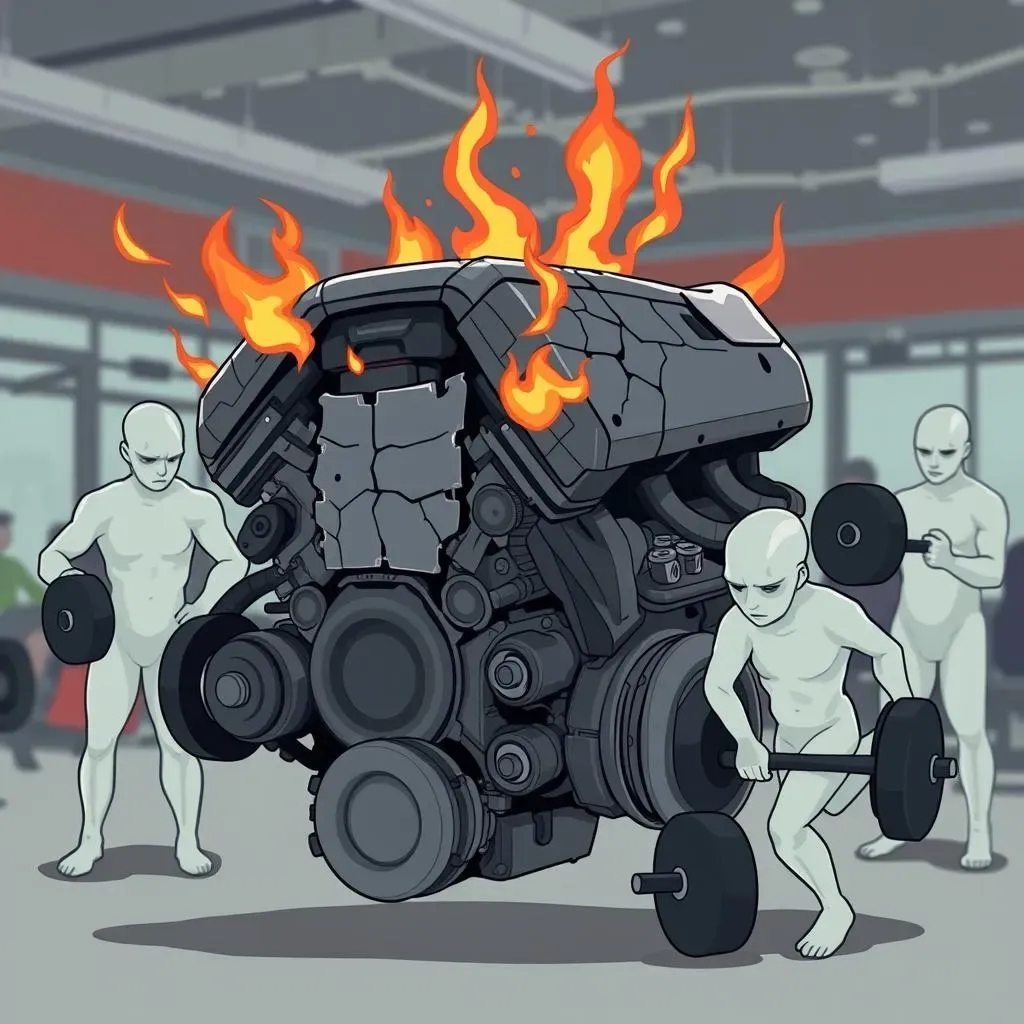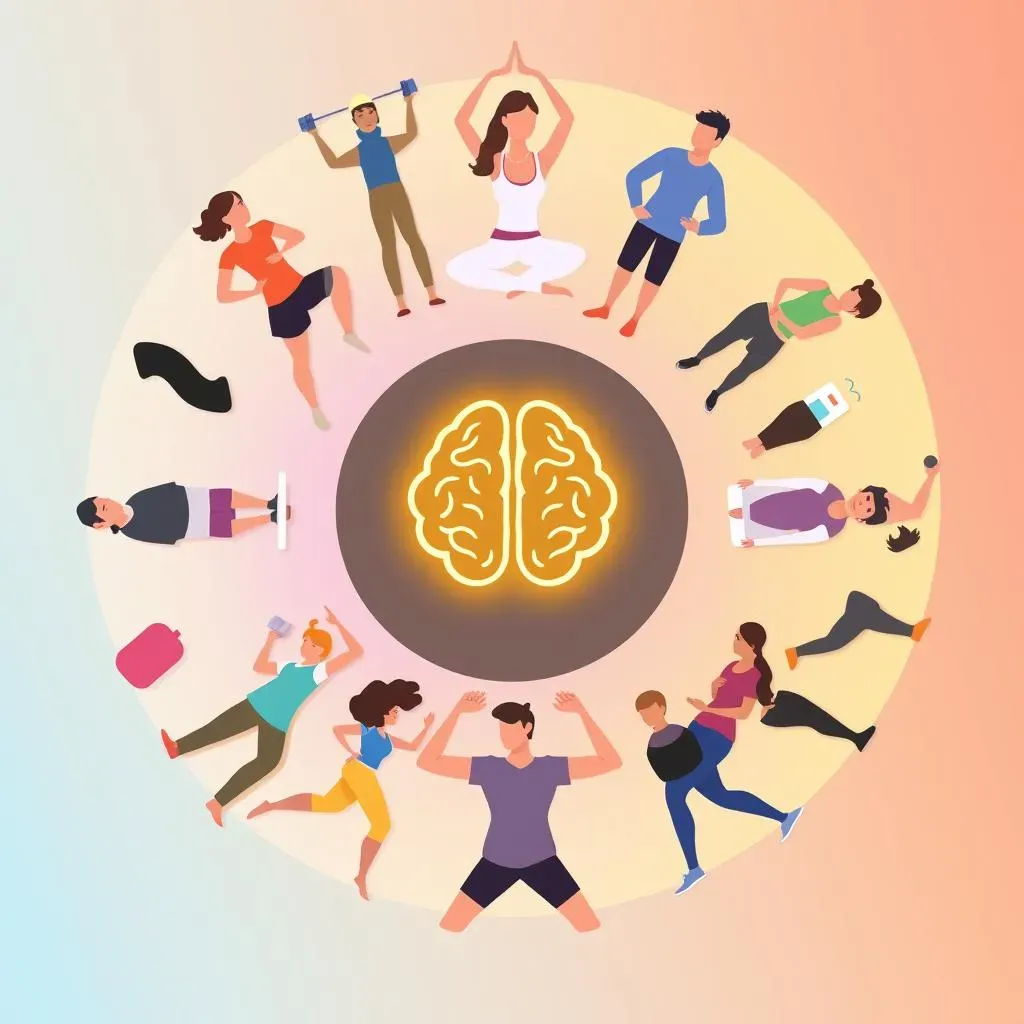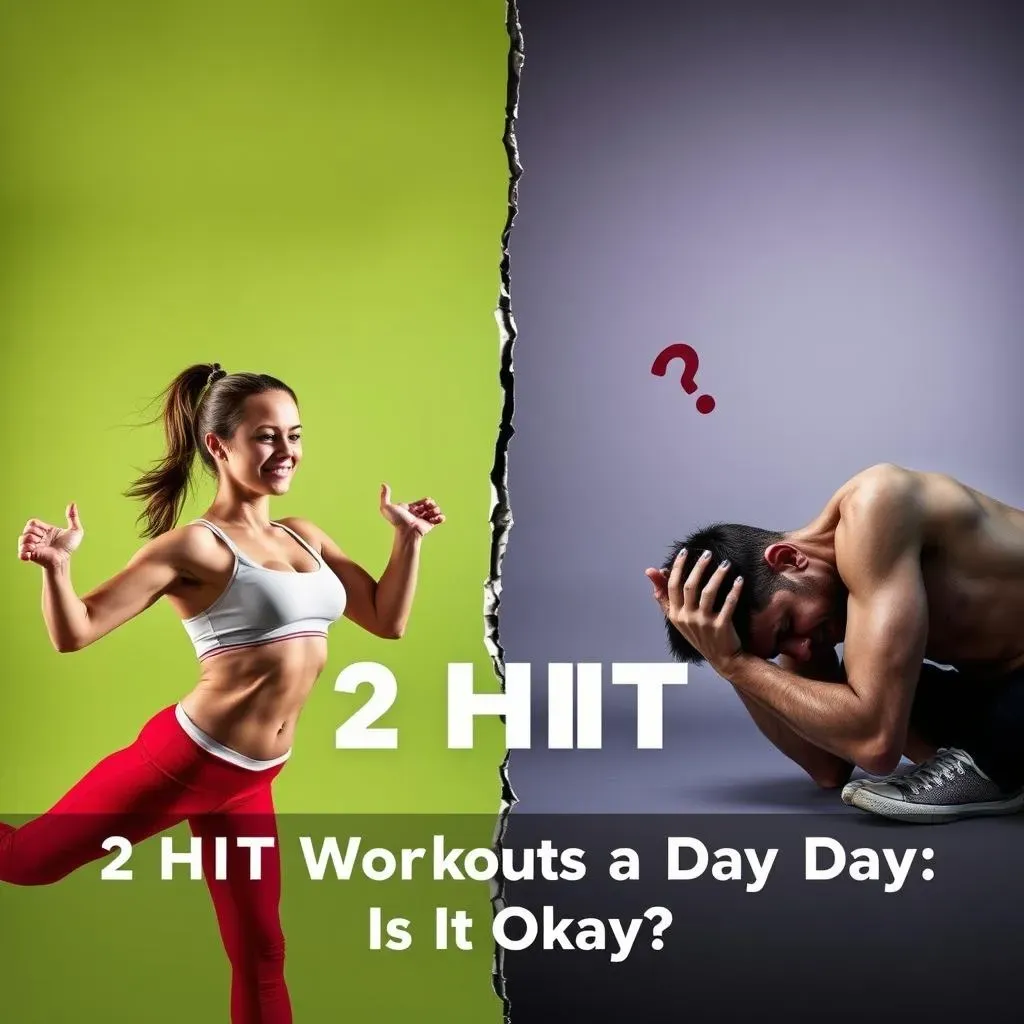Table of Contents
Ever wondered, "is it ok to do 2 HIIT workouts a day?" You're not alone. High Intensity Interval Training, or HIIT, has exploded in popularity, and for good reason. It's quick, it's effective, and it torches calories like nothing else. But with everyone chasing faster results, the question of doubling down on HIIT workouts is popping up more and more. Is it a shortcut to fitness glory, or a recipe for burnout and injury? This article dives deep into the science behind HIIT, explores the potential risks of doing too much, and helps you figure out if two-a-day HIIT is right for you, or if there's a smarter way to reach your goals. We'll unpack the pros and cons, look at when doubling up *might* be okay, and most importantly, guide you towards a workout plan that works *with* your body, not against it.
Is It Ok to Do 2 HIIT Workouts a Day?: Unpacking the Double Workout Trend

Is It Ok to Do 2 HIIT Workouts a Day?: Unpacking the Double Workout Trend
The HIIT Hype: Why We're Obsessed
Let's be real, HIIT workouts are like the superhero of fitness right now. Everywhere you look, from Instagram to your gym's class schedule, it's HIIT this and HIIT that. And it's no mystery why. Who doesn't love the idea of torching a ton of calories and getting a serious workout done in, like, 30 minutes tops? Plus, that post-HIIT endorphin rush? It’s addictive. Suddenly, the question "is it ok to do 2 HIIT workouts a day?" starts sounding less crazy and more like the next level of dedication, right?
But before you jump on the double HIIT train, let's pump the brakes for a sec. HIIT's effectiveness comes from its intensity – that's the whole point. You're pushing your body hard, going all-out in short bursts, followed by brief recovery periods. This method jacks up your heart rate, challenges your muscles, and keeps your metabolism revved long after you've finished. Think of it like sprinting, not jogging. You can't sprint for hours, and the same logic applies to HIIT. It's not meant to be an endurance sport.
The Allure of "More is Better" (and Why It's Wrong Here)
In our 'go-getter', 'hustle culture', it's easy to fall into the trap of thinking that if one HIIT workout is good, two must be amazing! More calories burned, faster results, right? Wrong. This is where we need to tap into a little fitness wisdom and understand that recovery is just as crucial as the workout itself, especially with high-intensity training. Your body needs time to repair and rebuild after you've pushed it to its max. Skipping recovery is like trying to build a house without letting the foundation set – it's a recipe for disaster.
Unpacking the Double Workout Trend: Are You a Candidate?
So, is it *ever* ok to do 2 HIIT workouts a day? Maybe. But the real question isn't just "can you?", it's "should you?". And more importantly, "what are your goals and is this the *smartest* way to get there?". For most people, especially those who are new to HIIT or even just moderately active, doubling up on HIIT is overkill and potentially harmful. Think about your current fitness level, your recovery capacity, and what you're actually trying to achieve. Are you training for a competition? Are you a seasoned athlete with a very specific plan? Or are you just trying to get fitter and healthier? Your answer to these questions will heavily influence whether or not two-a-day HIIT is even on the table.
The Science of HIIT: Why High Intensity Interval Training Works

The Science of HIIT: Why High Intensity Interval Training Works
HIIT Demystified: It's All About the Intervals
so "The Science of HIIT: Why High Intensity Interval Training Works" - sounds kinda techy, right? But it's actually pretty straightforward when you break it down. At its heart, HIIT is all about strategic bursts of effort. Think of it like this: you're not slogging away at a moderate pace for ages. Instead, you're going *hard*, like really pushing yourself to your max, for a short period, then dialing it back for a breather, and repeating that cycle. That's the interval part in High Intensity *Interval* Training. It’s this rollercoaster of exertion and recovery that makes HIIT so darn effective.
The beauty of HIIT is in its simplicity. You pick an exercise – sprinting, burpees, cycling, jumping jacks, you name it – and you alternate between those intense work periods and rest periods. The work intervals are designed to get your heart rate way up there, close to your maximum. The rest intervals are there to let you recover just enough to hit it hard again in the next work period. This on-off approach is key to unlocking all the awesome benefits of HIIT. It's not about duration; it's about intensity and smart intervals.
HIIT Component | Description |
|---|---|
High Intensity Work Intervals | Short bursts of maximum effort (e.g., 20-60 seconds) |
Recovery Intervals | Periods of rest or low-intensity activity (e.g., 10-60 seconds) allowing for partial recovery |
Cycles | Repeating work and recovery intervals for a set number of rounds or time |
The Body's HIIT Response: Why It's a Game Changer
Now, let's get into why this interval approach is so powerful. "The Science of HIIT: Why High Intensity Interval Training Works" boils down to how your body reacts to these intense bursts. When you push yourself that hard, even for short periods, you trigger a cascade of physiological responses. Your heart rate skyrockets, demanding more oxygen. Your muscles work overtime, burning through energy stores. And then during recovery, your body is playing catch-up, working to restore everything back to normal. This whole process creates what's called the "afterburn effect," or EPOC (Excess Post-exercise Oxygen Consumption).
Essentially, even after you've finished your HIIT workout, your metabolism stays elevated for hours. Your body is still burning calories at a higher rate as it recovers, repairs muscle tissue, and replenishes energy. This "afterburn" is a major reason why HIIT is so effective for fat loss and improving cardiovascular fitness. It's like getting bonus calorie burn long after you've hopped off the treadmill or finished your burpees. Plus, HIIT is fantastic for improving insulin sensitivity and boosting your VO2 max, which is a measure of your aerobic fitness. So, it's not just about burning calories in the moment; it's about creating lasting positive changes in your body.
Is Doing HIIT Twice a Day Safe? Risks and Potential Downsides

Is Doing HIIT Twice a Day Safe? Risks and Potential Downsides
Playing with Fire: The Risks of Overdoing HIIT
so we've established HIIT is awesome. But "Is Doing HIIT Twice a Day Safe? Risks and Potential Downsides" – that's the question we need to tackle head-on. Think of your body like a car. HIIT is like flooring the gas pedal. Doing it once or twice a week? Great for a speed boost. Doing it twice a *day*, every day? You're basically redlining your engine constantly. And just like with a car, pushing it too hard, too often, leads to breakdowns. We're talking increased risk of injury, not just the "oops, tweaked my ankle" kind, but more serious stuff like muscle strains, joint problems, and even stress fractures. Plus, your body's stress hormones, like cortisol, can go through the roof. And guess what cortisol does? It can actually sabotage your fitness goals by leading to muscle breakdown and fat storage – the opposite of what you're working towards!
- Increased Injury Risk: Pushing your body too hard without adequate recovery makes you more susceptible to strains, sprains, and overuse injuries.
- Elevated Cortisol Levels: Chronic stress from overtraining can lead to hormonal imbalances, hindering muscle growth and promoting fat storage.
- Burnout and Fatigue: Constantly pushing your limits without rest can lead to physical and mental exhaustion, making it harder to stick to your fitness routine.
- Overtraining Syndrome: In severe cases, excessive HIIT can contribute to overtraining syndrome, characterized by persistent fatigue, decreased performance, and mood disturbances.
When Could TwoaDay HIIT Be Considered? Exploring Specific Scenarios

When Could TwoaDay HIIT Be Considered? Exploring Specific Scenarios
Niche Cases: When Double HIIT Might Enter the Chat
Alright, so "When Could Two-a-Day HIIT Be Considered? Exploring Specific Scenarios?" Let's get real, for 99% of us just trying to stay fit and healthy, doubling up on HIIT is likely overkill. But, and there's always a but, there are some specific situations where it *might* be considered. Think super-advanced athletes, people training for very specific endurance events that require insane levels of conditioning, or maybe someone trying to break through a serious plateau under very controlled circumstances. Even then, it's not just about randomly adding a second HIIT session. It's about strategic planning, meticulous attention to recovery, and a really solid understanding of your body's limits. We're talking about fine-tuning performance here, not just blindly pushing harder.
Smarter Strategies: Optimizing Your Workout Schedule for Results and Recovery Instead of Doubling HIIT

Smarter Strategies: Optimizing Your Workout Schedule for Results and Recovery Instead of Doubling HIIT
Listen to Your Body: The Ultimate Workout Guide
Instead of obsessing over "is it ok to do 2 HIIT workouts a day?", let’s flip the script and talk smart training. Your body isn't a machine you can just redline constantly; it's a complex system that responds best to intelligent programming. Forget the 'no pain, no gain' mantra – it's outdated and frankly, dumb. The real secret sauce? Listening to your body. Seriously, it sounds cliché, but it's the golden rule. Are you feeling constantly wiped, dreading your workouts, or noticing your performance dipping? These are HUGE red flags waving at you, screaming that you need to back off, not double down. Overtraining is a real thing, and it’s a one-way ticket to injury and zero progress.
Think of your body's signals like notifications on your phone. Ignoring them just leads to a system crash. Learn to distinguish between the good kind of workout soreness (the "I challenged myself" kind) and the bad kind (the "something's actually broken" kind). Rest days aren't for the weak; they're for the wise. They're when your muscles repair and rebuild, getting stronger than before. Prioritizing recovery is not just about avoiding injury; it's about maximizing your gains in the long run. It's about sustainable progress, not a flash-in-the-pan burnout.
Variety is the Spice of Fitness (and Recovery)
So, ditch the double HIIT obsession and embrace workout variety! Instead of hammering your body with two high-intensity sessions daily, think about a balanced weekly plan. Mix in different types of workouts. Strength training is your best friend for building muscle and boosting metabolism – plus, lifting heavy stuff is seriously empowering. Throw in some steady-state cardio – think jogging, swimming, or cycling – for endurance and active recovery. Yoga or Pilates are amazing for flexibility, mobility, and those crucial recovery days. The beauty of variety is that you're working different muscle groups in different ways, preventing overuse injuries and keeping things interesting, both physically and mentally.
Think of your week like a well-rounded meal plan, not just a plate piled high with one thing. Maybe Monday is strength focused, Tuesday is HIIT, Wednesday is active recovery like yoga, Thursday is cardio, Friday another strength session, and the weekend is for longer, lower-intensity activities or complete rest. This approach not only prevents burnout but also ensures you’re developing well-rounded fitness – strength, endurance, flexibility, and power. And guess what? You'll probably see better results and enjoy your fitness journey way more than if you were just relentlessly pounding away at HIIT twice a day. It's about working smarter, not just harder.
Workout Type | Benefits | Example Activities |
|---|---|---|
HIIT | Calorie burning, cardiovascular fitness, time-efficient | Sprints, burpees, jump squats |
Strength Training | Muscle building, metabolism boost, bone density | Weightlifting, bodyweight exercises, resistance bands |
Steady-State Cardio | Endurance, cardiovascular health, active recovery | Jogging, swimming, cycling, brisk walking |
Flexibility & Mobility | Injury prevention, range of motion, recovery | Yoga, Pilates, stretching, foam rolling |
Double HIIT Days: Proceed with Caution and Smart Planning
So, is it ok to do 2 HIIT workouts a day? The short answer is: maybe, but probably not for most people, most of the time. While the idea of doubling your efforts for faster results is tempting, pushing your body too hard with back-to-back high-intensity sessions often backfires. Prioritize smart training over more training. Listen to your body, factor in recovery, and remember that consistency and a balanced approach will always win out in the long run. Sustainable progress is better than a fast track to burnout.
